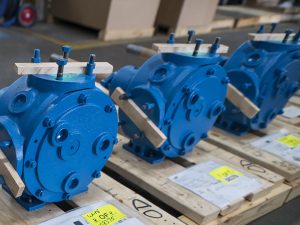
When you buy a pump with a 20 year lifespan you aren’t just buying the sticker price of say $68,333, you are committing to spend some $689,000 in installation, maintenance and operating costs over the next 20 years according to The Hydraulic Institute. Of which $415,812 is the operating cost – which is about 2/3 of the total life-cycle cost.
What usually happens when buying a pump? C’mon now be honest… we both know that we get into this argument about which one has the lower sticker price, "sure we could use yours but that one is like $5,000 cheaper".
Doesn’t matter that it will cost you 10% more to operate – which is $41,500 in operating costs because it’s not optimal for the system, you’ll have more repairs and maintenance costs because of it… that doesn’t matter, what matters is the satisfaction of saving $5,000 right now.
Who knows what impact a cheaper pump will have on production down time, on profits, or on production output…
Imagine what would happen if your manager ever asked:
“How many production dollars have we lost because we keep shutting the system down to repair that cheap pump YOU purchased?”
That’s only the beginning of the problem.
Why Your Engineering Procurement and Construction (EPC) firm is offering up ‘poor designs.’
Pump System design has come along way over the last couple of decades. Most of the designs we see for a pumping system using a fixed speed control valve system… now they are the cheapest to install but they are not the cheapest to run.
Variable-speed drives and parallel multi-pump systems are often cheaper to operate and the additional installation and set up costs are made back very quickly after being put into use.
EPC firms do this because you, the end client, have trained them to. The same – ‘how do we keep the price tag as low as possible to win the work mentality’ filters into system design as it does for choosing the right pump.
The designs are in fact good, they just aren’t optimized for total life cycle cost. Likewise your cheaper pump is perfectly good but it is a terrible selection once you evaluate the life-cycle costs. Anyone with a keen financial mind will understand the implications to the plant. Even in a balance sheet kind of way.
Now you know how to avoid this mess going forward…
What Can We Do With My Existing System?
This is not a quick fix, but it is relatively simple to optimize an existing system. The reason being it’s not “let’s put in a variable speed drive and everything will be fixed.”
We need to review your existing systems, and look for opportunities that will reduce energy consumption and improve reliability – generally by reducing wear and tear. This will decrease downtime and costs associated with lost production, maintenance and repairs, all while extending equipment life. Costs associated with downtime routinely exceed energy and reliability costs combined. To get some help assessing your system call at 404-363-6000 or drop us a line sales@pyebarker.com and our team can help you figure out what’s best for you.


